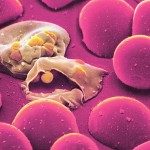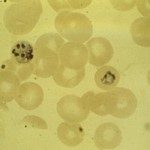Lien vers Pubmed [PMID] – 38517321
Lien DOI – 10.1002/jmri.29359
J Magn Reson Imaging 2024 Mar; ():
It remains unclear whether extracting peritumoral volume (PTV) radiomics features are useful tools for evaluating response to chemotherapy of epithelial ovarian cancer (EOC).To evaluate MRI radiomics signatures (RS) capturing subtle changes of PTV and their added evaluation performance to whole tumor volume (WTV) for response to chemotherapy in patients with EOC.Retrospective.219 patients aged from 15 to 79 years were enrolled.3.0 or 1.5T, axial fat-suppressed T2-weighted imaging (FS-T2WI), diffusion-weighted imaging (DWI), and contrast enhanced T1-weighted imaging (CE-T1WI).MRI features were extracted from the four axial sequences and six different volumes of interest (VOIs) (WTV and WTV + PTV (WPTV)) with different peritumor sizes (PS) ranging from 1 to 5 mm. Those features underwent preprocessing, and the most informative features were selected using minimum redundancy maximum relevance and least absolute shrinkage and selection operator to construct the RS. The optimal RS, with the highest area under the curve (AUC) of receiver operating characteristic was then integrated with independent clinical characteristics through multivariable logistic regression to construct the radiomics-clinical model (RCM).Mann-Whitney U test, chi-squared test, DeLong test, log-rank test. P < 0.05 indicated a significant difference.All the RSs constructed on WPTV exhibited higher AUCs (0.720-0.756) than WTV (0.671). Of which, RS with PS = 2 mm displayed a significantly better performance (AUC = 0.756). International Federation of Gynecology and Obstetrics (FIGO) stage was identified as the exclusive independent clinical evaluation characteristic, and the RCM demonstrated higher AUC (0.790) than the RS, but without statistical significance (P = 0.261).The radiomics features extracted from PTV could increase the efficiency of WTV radiomics for evaluating the chemotherapy response of EOC. The cut-off of 2 mm PTV was a reasonable value to obtain effective evaluation efficiency.4 TECHNICAL EFFICACY: Stage 2.

